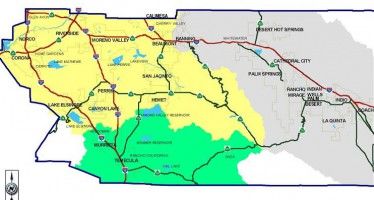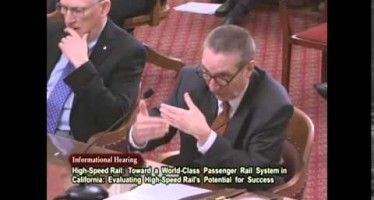Real Culprits in CA Housing Crash
By Joseph Perkins
As the California economy continues slowly to recover from the collapse of its once-thriving housing sector, the banking industry is trying to close its books on the financial disaster.
This week, Bank of America agreed to pay Fannie Mae $11.6 billion to settle a claim that its subsidiary, Countrywide Financial, sold questionable mortgage-backed securities to the government mortgage agency.
Meanwhile, BofA, San Francisco-based Wells Fargo and eight other large banks agreed this week to pay $8.5 billion among them to settle alleged foreclosure abuses, the Federal Reserve and Comptroller of the Currency announced.
The settlements were viewed, in some quarters, as overdue punishment for the banking industry, which, supposedly, did much to create the so-called housing bubble and, when the bubble inevitably burst, did much to foment the foreclosure crisis.
Nearly 4 million borrowers whose homes were foreclosed upon in 2009 or 2010, including several hundred thousand California residents, actually will receive compensation of as much as $125,000 under the bank settlement with the Fed and Comptroller.
Well, I do not begrudge those who unfairly have been turned out of their homes financial reparations from the banks, although I do not think that applies to the vast majority of foreclosures here in the Golden State.
My problem is that responsibility for the housing crash has been heaped almost entirely on the banks when the government — both at the federal and state levels — had far more to do with it.
Indeed, once upon a time, it was possible for the average-earning California family to afford the median-priced California home. But that all changed in the 1970s, when home prices here increased by nearly 90 percent over the decade, in real terms, far outpacing the increase in family incomes.
While a host of factors contributed to the run up in California home prices, the biggest, by far, was the enactment of far-reaching environmental laws by both Washington and Sacramento.
Indeed, with California native Richard Nixon in the White House, the Environmental Protection Agency was created in 1970 and that was followed by several laws: the National Environment Policy Act and the Clean Air Act in 1970, the Marine Mammal Protection Act in 1972, the Endangered Species Act in 1973 and the Safe Drinking Water Act in 1974.
Meanwhile, with Ronald Reagan occupying the governor’s office, the California Environmental Quality Act and the Porter-Cologne Water Control Act became law in 1970. And in 1972, voters established the California Coastal Commission, giving it vast powers to restrict housing development along the coast.
Environmental laws
Since the 1970s federal and state environmental laws have been used by anti-growth activists to Mau-Mau the state government, as well as local governments, to impose land-use restrictions that staunch home building (and related development, including schools, libraries, shopping centers, hospitals, churches, etc.).
With government declaring increasing amounts of land off limits to new home projects, land prices increased throughout the state exponentially, particularly in coastal areas.
As a result, the cost of building a home in California rose during the 1970s to the point that, by decade’s end, most families could not afford the state’s median-priced home. And by the end of the 1980s, only a quarter of families could afford the typical California family home. Things have only gotten worse since then.
Instead of addressing the root cause of housing unaffordability and declining homeownership — environmental laws that artificially inflate the price of housing in California compared to much of the rest of the country — the government concentrated instead on mortgage lending, not so gently encouraging banks to loosen their lending requirements to the point that almost anyone could qualify for a home.
BofA, Wells Fargo and other banks complied with the government’s dictate. And now they are left to pay the price.
Related Articles
Sen. Boxer: Conservation would solve drought
Can California’s zero-sum water wars only be resolved by a system of stern water conservation? That’s what California U.S.
State Senate hearing casts doubt on high-speed rail
Editor’s Note: This is Part 1 of a series looking in depth at the latest hearing in the state
High costs plague embattled high-speed rail
Despite a major shift in its construction strategy, newly anticipated budget overruns hit California’s beleaguered high-speed rail project, as citizens and





